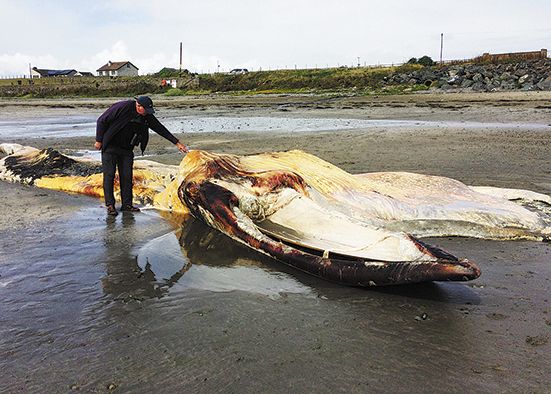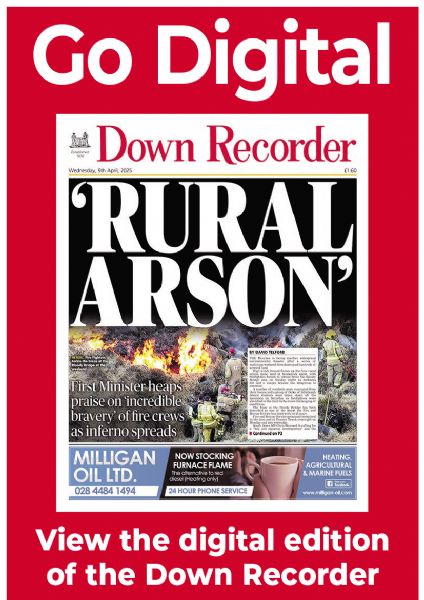16-metre Sei whale washed up
16-metre Sei whale washed up
14 September 2022

A MAMMOTH whale washed up near Killough is thought to be a Sei whale – the third largest whale in existence – and among the rarest visitors of its kind to the shores around Britain and Ireland.
The carcass of the massive baleen whale, eclipsed in size only by a blue whale and fin whale, was found partially decayed at Minerstown beach.
It had been spotted last week off the beach at Rossglass but was washed out to sea again before returning, and ending up beached near Killough.
If DNA samples taken by the Centre for Environmental Data and Recording (CEDaR) confirm it as a Sei, it would mark only the third confirmed sighting for Northern Ireland and the first for County Down.
Yesterday, a multi-agency team, including Newry, Mourne and Down Council, mounted an effort to take it on a journey which will lead to its preservation underground and eventual display at the Ulster Museum.
Local ecologist Chris Murphy and his wife Doris Noi were on the scene this week and photographed parts of the gigantic whale’s skeleton that became separated from the rest of the carcass, including the hyoid – voice box – and a head bone estimated to weigh over one tonne.
In living condition, an adult Sei whale reaches 16 metres long and 25 tonnes.
The carcass found in South Down is thought to be have been an adult female, which may have been drifting dead for more than six months before it washed up.
Chris said the whale showed signs of having been attacked by cookie cutter sharks, which are known to target this type of whale, when it moves from its traditional cold water habitats, to warmer tropical waters, to give birth.
“This has about 30 distinctive marks, the circular cuts that are telltale signs of a cookie cutter shark, near its fluke,” he said, referring to the whale’s tail area.
“The stranded whale will have eaten around 900kg of plankton, krill and small fish every day,” he said.
“Investigation of a bone which became separated from the body identified it as part of the whale’s hyoid apparatus. This is part of the whale’s voice box, enabling it to suck and also make sounds.
“The dimension of this bone give a strong indication that the animal stranded is a Sei whale,” he said, adding that it is a globally endangered species with an estimated world population of just 80,000.
Dr Mike Simms, Senior Curator in Natural Sciences with National Museums Northern Ireland, said he hoped the whale could be preserved for future generations, particularly in light of its rare appearance in local waters.
Commenting that the carcass could be buried underground, possibly in the Delamont area outside Downpatrick, he explained that this was a great way of breaking down the remaining flesh on the skeleton.
“We have been doing a lot of work with the Geology Survey Northern Ireland, looking at the geology and the soil to ensure that if it was buried it would not pollute the ground, and the soil in Delamont is impervious and would prevent anything from seaping out.
“The best way to bury it is in elephant dung,” he revealed, but considering the difficulty of procuring enough of that in this part of the world, he said “horse manure would be the next best thing”.
Dr Simms added: “If it does go to Delamont we would hope to bury it for maybe between 12 to 18 months, then exhume it.”
The Sei bones were very oily and that if traces remained following its burial, biological washing powder could then be used to remove any residue.”


